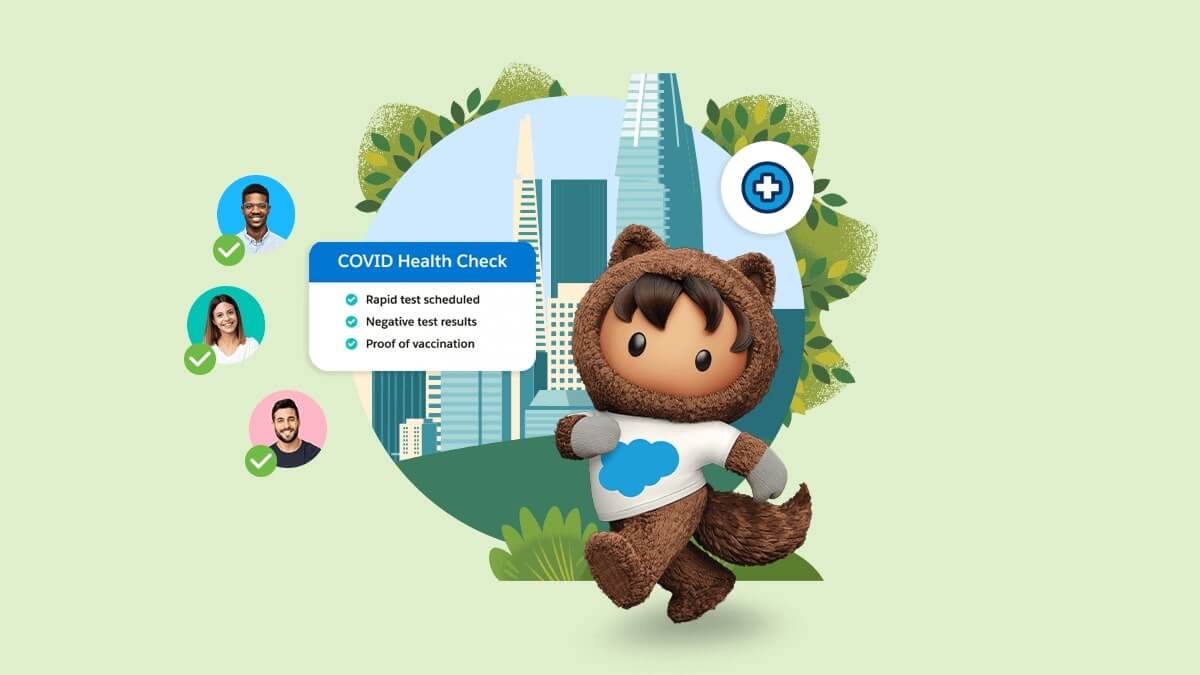Chapter 3: Scale COVID-19 Safety Practices in the Workplace

Coming back together safely at work requires careful planning and preparation. After all, the wellbeing of your employees is paramount. The information we provide in this part of the playbook isn’t meant to be conclusive, but is rather an aggregation of free resources and templates based on our own reopening journey – a compass to help you make the right decisions for your own business.
In May 2021, we started to gradually reopen our offices all around the world. As of February 2022, we have successfully reopened 84 offices across various regions. Many people have asked us how we made our decisions to reopen so many offices. While we can’t tell you exactly when the right time to reopen your business will be, we can share our framework, which will allow you to account for the changing dynamics of the health environment and your own unique circumstances.
Here is the protocol we follow to successfully bring our people back to work safely:
Create a Leadership Task Force
Outline the Phases of Reopening
Before we reopened our first offices, we anticipated a graduated return – one that looked more like using a light dimmer than a light switch. We created a roadmap that broke the process into multiple phases. The timing of your phases will be specific to your office, geography, and business needs.
Given the evolving circumstances, creating a phased approach can provide structure and set expectations throughout the process. You will more than likely need to make adjustments over time. For example, if an outbreak occurs while you’re in Phase 4, you might have to revisit Phase 0 or 1. Maintain clearly defined goals for each phase and the flexibility to change from one phase to another, and you’ll be on the right track.
Prepare Your Employees
Adopt Flexible Work Policies

Consider Your Work Shifts
Implement Regular COVID-19 Testing and Wellness Check-Ins
Salesforce asks employees to complete regular COVID-19 testing and a wellness questionnaire before heading into the office. If you decide to use a questionnaire, be sure to check your local laws and keep it updated.
To develop a comprehensive COVID-19 testing plan and wellness questionnaire, follow the latest public health guidelines. Current CDC guidance says that if employees who are fully vaccinated and boosted are exposed to COVID-19 they do not need to stay home unless they experience symptoms. Those who have had a confirmed case of COVID-19 within the past 90 days also do not need to quarantine, unless they develop symptoms. Unvaccinated people who are exposed to the virus should quarantine for five days. Anyone in quarantine should get tested and stay away from work until they test negative.
Follow Guidance for Face Coverings and Other Protective Equipment
Rethink Your Office Design
The design of your office plays a critical role in keeping your employees healthy. Changes to your spaces could make your environment safer and help employees feel more at ease.
Figure out what needs to be subtracted and what needs to be added. At Salesforce, we removed chairs and desks, reducing staffing capacity by 40% to 50% to meet the six-foot-apart rule. We also installed Plexiglass dividers to safeguard workstations and hand sanitizer stations throughout every floor.
Finally, it’s a good idea to assess your building’s air circulation and bring in as much fresh air as possible. Measures can be as simple as opening windows or keeping HVAC systems running to avoid air recirculation.
Be sure to discuss these and other solutions with your property management and safety and security teams.
Learn more about Safety Cloud to manage and scale COVID-19 testing and automate validated entry for employees and customers.
The Keys to Success: A Science-Based Foundation, Open Communication, and Flexibility
Chief Medical Officer
Chief People Officer
Chief Marketing Officer
More Resources

Video
Get Expert Guidance on How to Get Together, Safely

Customer Story
Paladina Health Keeps Employees Safe and Builds Trust with Salesforce

Salesforce+ Video
Soledad O'Brien on How Salesforce Uses Safety Cloud





